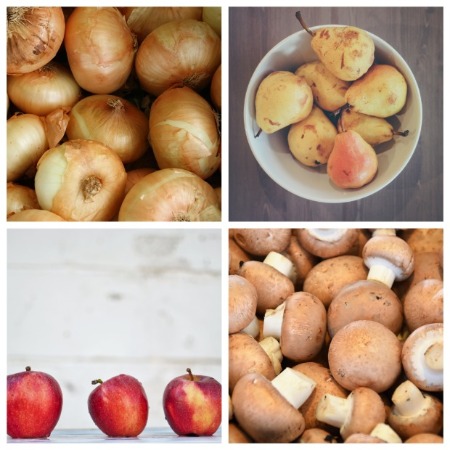Over the next couple of days I’m going to share with you what I’ve learned in my quest to stop feeling like a blowfish. Some parts might be a little TMI ;)
I’ve put all this information and research together for you and zipped it up into a helpful “dos and don'ts” protocol so you can eliminate puffiness in your midsection and legs.
In today’s email, I’m going to share 4 surprising foods that cause gas and bloating in vegans, including my two biggest culprits (which may be yours too!)
If my story sounds like yours, keep reading and do not miss tomorrow’s email with my 9-1-1 emergency remedy for your biggest digestive woe.
My story
I struggled with constipation, bloating, and swelling all over. I felt… fluffy. I also got a HUGE balloon belly at night. I looked very pregnant and it hurt. Some nights I was so uncomfortable I had trouble sleeping.
This “human blimp” situation was something that happened to me slowly. When I first went vegan, I reveled in how good my stomach felt. I had the reverse problem before: diarrhea and smelly gas, which went away overnight when I stopped eating milk and cheese.
Then things started to backup. Initially I thought it was stress or PMS, but as my issues became more frequent, I suspected I might have an allergy or sensitivity.
I took the logical next step: I went gluten-free, soy-free, xyz-free. I even tried FODMAP and food combining.
When all those guidelines didn’t work, I put myself on a rigorous elimination diet, logging EVERY ingredient I ate (plus my elimination patterns).
Every couple of months I’d think I had *finally* sorted out what foods were “safe” for me (and which weren’t)... until my body betrayed me AGAIN. On and on this routine went for TWO YEARS.
Frustrated and desperate, I started looking beyond food for solutions. I tried probiotics, magnesium, meditation, kombucha, fasting, Gas-X.
With nearly all of these there was a “honeymoon period” of feeling better, followed by an even worse relapse.
I went back to my “unsafe foods” list and started looking more closely at each item. I went way beyond macronutrients and micronutrients and dug deep into the molecules, particularly the monomers and polymers of carbohydrates (oligosaccharides, disaccharides, monosaccharides, polysaccharides).
It was there, at that molecular level, that I started to see a clear pattern.
Foods/ingredients that often bothered me had the same monosaccharides or disaccharides AND foods that were usually “safe” for me did not.
Now we were getting somewhere (!)
I started reading research on the saccharides that bothered me, and soon discovered that they are bothersome to everyone, but that sensitivity levels and how well you digest them (or not) varies from person to person. Your ability to process them can change with age, diet, overall health, etc.
Finally I had an explanation.
Through this research and exploration I’ve realized I’m not allergic to the foods I labeled as “unsafe” and I don’t have to ban the ones I love forever (that’s the good news). HOWEVER, if I want to avoid the belly balloon (and general puffiness all over) I need to be strategic.
For me that means I need to make sure I don’t eat too much of the bothersome foods, and that when I do eat them, I consume them in the safest, most tummy-friendly way.
Here’s the bad news: the majority of the “offending foods” are the backbone of most recipes and are frequently served TOGETHER, making food diversity and balance a challenge.
This relationship between the ingredients also explains why I was never able to precisely identify my culprits by journaling my food. It was so rare that I ate any of these foods in isolation and if I had, it probably would not have bothered me because it was the culmination that created calamity.
WHY you have a balloon belly:
Any food that is not fully digested in the small intestine moves on to your colon where it undergoes fermentation, a natural process that results in gas a.k.a. the belly balloon misery.
Chewing your food extremely well and eating cooked (not raw) food helps your digestive system work optimally (breaking down the food to prevent fermentation).
HOWEVER there are insoluble substances in plant foods your body can’t digest, even in optimal conditions. Fiber, for example, can’t be broken down, so when you eat a lot of it, fermentation (gas and bloating) is likely.
This is why high fiber foods such as raw and cruciferous vegetables (broccoli, cauliflower, cabbage, kale, etc.) and whole grains tend to make people bloated and gassy.
Cooking definitely helps (you body can better digest and break it down if it’s cooked), but if you want to de-bloat completely, eliminate or reduce your consumption of these foods, along with the surprise offenders below.
4 surprising foods that cause gas and bloating

#1 Surprise Offender
ONIONS. The fructose found in onions is difficult to breakdown.They’re also high in fiber AND they are naturally very fermentable, making onions a shocking triple threat.
#2 Surprise Offender
APPLES. High in fructose (which can be difficult to digest) and the skin is very high in fiber. I find eating them on an empty stomach without the skin works best for my system.
#3 Surprise Offender
PEARS naturally contain sorbitol (a popular ‘artificial sweetener’). Sorbitol digests much slower than other sugars so there’s an increased fermentation risk. FYI, all sugar alcohols (sorbitol, xylitol, etc) have an osmotic effect, which is why sugar-free foods often come with warnings that if you eat too many you might poop your pants involuntarily.
#4 Surprise Offender
MUSHROOMS contain the oligosaccharide sugar raffinose, which can’t be fully digested in
the small intestine, making fermentation (gas) inevitable. BEANS also contain raffinose.
To summarize: Avoid raw vegetables, cruciferous vegetables (even cooked), corn, onions, garlic, mushrooms, legumes (beans, peanuts), and limit your consumption of whole grains and fruits. Artificial sugars, booze, coffee, salt, processed foods (especially processed wheat) also belong on the elimination/avoid list if you want to flush out your body and remove all-over puffiness, inflammation, and bloating. This is what I do before a photoshoot.
There’s also 9 foods you should eat if you want to beat bloat and stop any digestive distress. I call them the “fine nine” and I’m going to share them with you tomorrow.
For now, I have a question. Can you help me out?
Take this survey to tell me your biggest digestive woe. (Bloating? Constipation?)
I’m going to share my #1 remedy for what you selected!
This is an incredible opportunity to flush your body out with my protocol.













